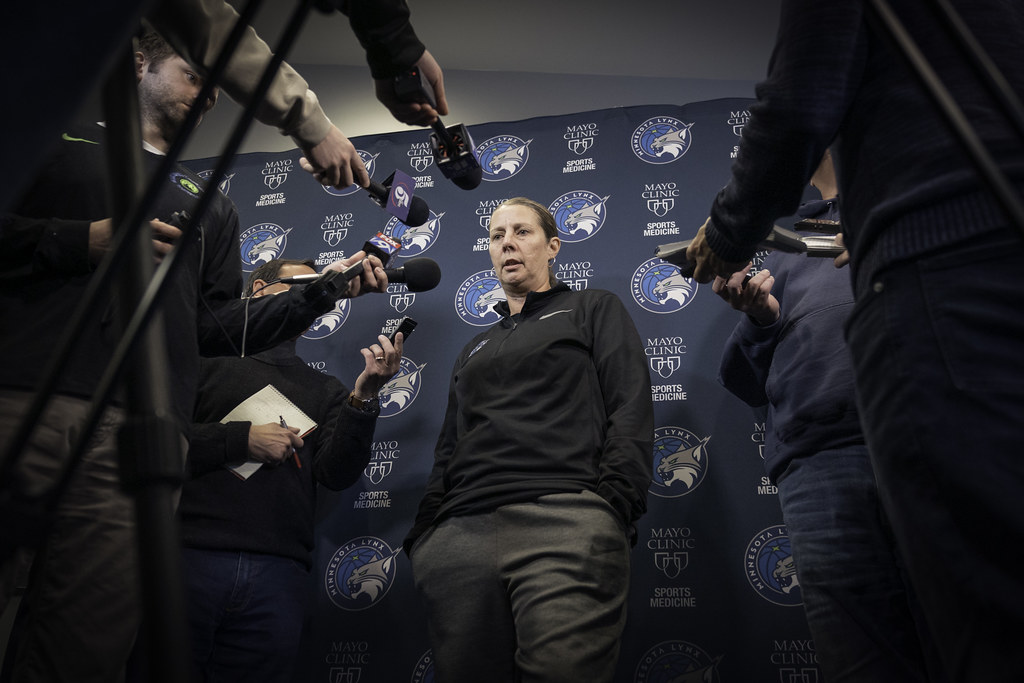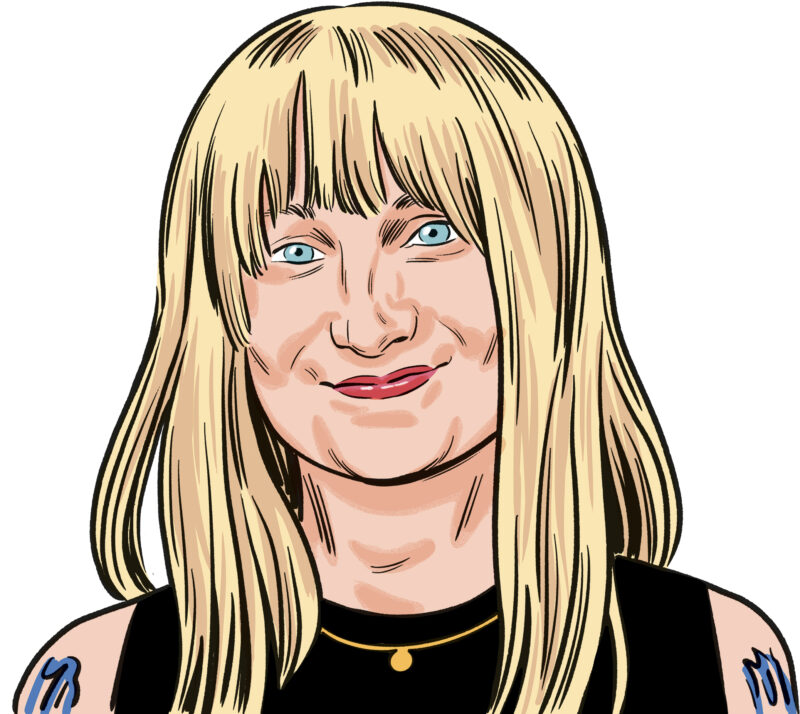
For years the WNBA’s business plan, in ambition and practice, focused on increasing the league’s visibility. It prioritized better broadcast deals and new streaming partnerships to secure more televised games. It leaned into the athletes’ outspokenness and tendency toward activism, and capitalized on the growing profiles of its biggest stars. By and large, it worked. Even before the groundswell of interest we’ve seen in women’s sports over the last two years, there was a steady uptick in the W’s popularity within and beyond its regional markets. The Caitlin Clark Effect has certainly had an impact—and now games sell out across the country and events move to larger venues even when Clark isn’t involved, proving that the league has, in many ways, achieved what it set out to do.
There’s a sense that, given the time it took to reach this point, the next big business steps for the W aren’t as clear, or urgent. Continued expansion is a given, but while the WNBA Commissioner, Cathy Engelbert, has confirmed the addition of two new teams by 2028, she hasn’t provided more details or a concrete timeline. The exciting, and occasionally overwhelming, result of reaching once far-off goals is that the future is suddenly wide open. What’s more, there are myriad ways for the W to grow its game without tripping on the same stumbling blocks as larger leagues, like the NBA or NFL, that reneged on their support of certain players as they grew. Most easily, the W can follow the lead of its own athletes.
Last week, New York Liberty Forward Breanna Stewart and Minnesota Lynx Forward Napheesa Collier announced the launch of Unrivaled, a new three-on-three league. Stewart and Collier, who played together on the University of Connecticut’s storied Huskies squad, said the new league would launch its first ten-week season in Miami next January. Unrivaled promises six-figure salaries (the highest average salary offered by a women’s pro sports league) and equity stakes for its thirty participants. It is backed by US women’s pro soccer players Megan Rapinoe and Alex Morgan, former NBA players Carmelo Anthony and Steve Nash, pro golfer Michelle Wie West, UConn head coach Geno Auriemma, plus a few other celebrity backers. Former ESPN president John Skipper and former Turner president David Levy are working to develop a media rights deal for the tournament. Engelbert has also expressed her support for the venture: “The momentum for women’s basketball has never been greater,” she wrote. Stewart and Collier, who will both participate, have promised All-Star caliber rosters.
Engelbert’s response sets her apart from NBA Commissioner Adam Silver, who rarely states his public support for the potentially competitive business endeavors of NBA athletes. He doesn’t have to—his players have enough traction with fans already—but Engelbert knows that the W grows the more it emphasizes its players. Collier and Stewart are bringing women’s basketball and its finest players to viewers for an extra three months per calendar year, which will only benefit the W long-term.
Athlete-led initiatives are especially helpful for the WNBA when stars can continue working within their team’s markets through the rest of the year, as is the case with Unrivaled. And with a second, generous salary, players can offset the need to play overseas during the offseason. In the 2020 Collective Bargaining Agreement (CBA) between the WNBA Players Association (WNBPA) and the league, the WNBA introduced a rule to begin in 2023: players with more than two years of experience are now required to prioritize the W over their overseas commitments, which can sometimes run into the W season. Players must now report to their teams by May 1, or else be fined; if they miss the start of the season on May 19, they are suspended for the year. In a roundabout way, Unrivaled may also work in favor of the W’s prioritization rule since the tournament will already be wrapped by the time the W season starts.
Unrivaled will set a new financial precedent for women pro athletes, and the WNBA will need to expedite its own increase to salaries and benefits as a result. Equity stakes (W players don’t get a cut of their team’s merchandise sales) are already on the table, and with the WNBPA eligible to opt-out of their current CBA at the end of this season to negotiate a new one—which they will very likely do—it’s an important time for players to reconsider their demands. By working in concert with its athletes, Engelbert and the W can further seize on this era of growth and set a competitive, more inclusive, model as a pro league.
But that cooperative model can still get sticky. Ahead of this season, the W announced that it would close locker rooms to media so reporters would no longer be able to do pre- or postgame interviews. The policy change now requires that athletes are brought out of locker rooms for interviews. But even these requests get filtered through franchise PR staff, who decide, along with the players, which one they will honor. The policy change reflects the interest of many professional athletes, not just female ones, who want ownership over their stories. Yet, in barring the media from these more intimate spaces, the W receives less intimate reportage. Compelling stories—“narratives,” to use sports media’s favorite buzzword—are easiest to find when a player can let their guard down, away from the scrum. An interview conducted in a hallway has a much different tenor.
For the last decade, we’ve seen the NBA reconciling the toll intense parasocial dynamics with fans take on players—and it might be this that the W is trying to avoid. NBA athletes are picked apart and criticized at every turn. Social media posts of players doing anything other than playing basketball, for example, are full of comments telling them to get back in the gym. Fans feel a sense of ownership over the athletes they watch, an entitlement to their time, image, and bodies. So it’s understandable that W athletes, who, as women, are doubly scrutinized and more vulnerable under the public gaze, want to protect themselves.
As the W expands, individual franchises may choose to tailor their media policies, giving the press better access to players. The league and its athletes know that parasocial relationships push merchandise sales, and together they will have to negotiate at what cost. Beyond new avenues through which to sell views and products, W expansion will bring more opportunities for player development, more money to improve technical ability and off-court skills (some teams have started to offer mentoring in practical subjects like financial literacy). These efforts help the W as a business by potentially lengthening athletes’ careers.
The hope in any sustainable business model is forward momentum, and the W staffers have nailed that. But it’s clear that the league will set itself apart by working in tandem with its athletes, and letting them lead. It seems like such wasted energy to shy away from the spotlight now, after so long chasing it, and at the moment when it is finally fixed brightly on the league.





